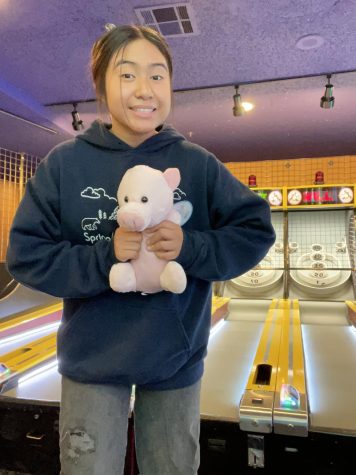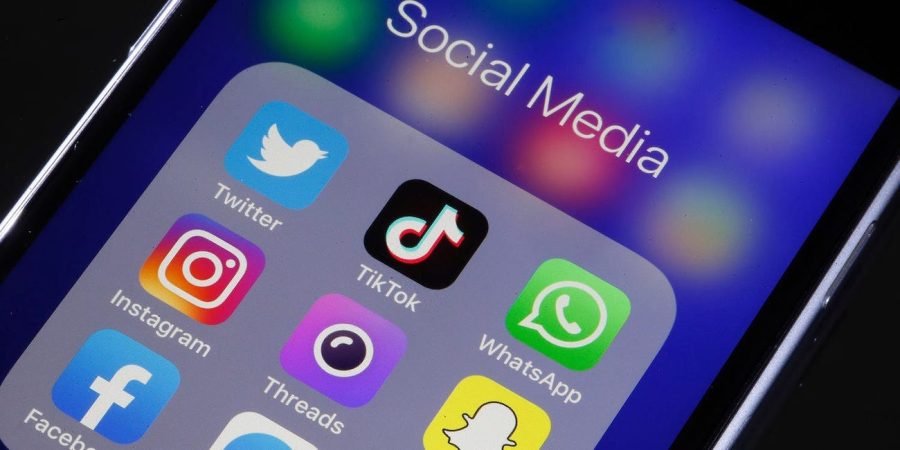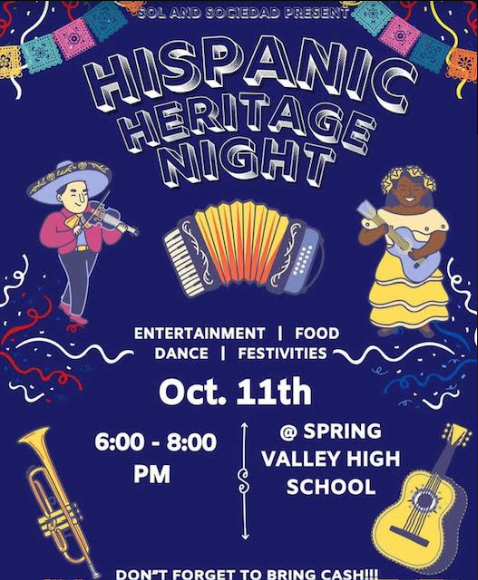Students Prioritize Authenticity with BeReal
Against Insta-Culture
Spring Valley high school senior Satik Basembekyan is dismayed. Living in a world where social media is in the hands of almost everyone around the globe, she sees it imperative to show her “real” self not only in person but online as well. She applauds her peers who promote authenticity within their posts as people have subjected curated personas of themselves on popular networking platforms.
The fight for authenticity grows stronger every day that technology is evolving and becoming a ritualistic part of adolescents’ lives.
Basambekyan sees that while genuinity within younger generations in social media is spreading, there are still some adolescents that choose not to follow that route.
“While our generation has become more open, I believe that there is a slight divide when it comes to the authenticity side and ‘fake’ side of social media,” Basambekyan said. “For our generation, it is imperative to understand that we all differ in our own beautiful ways, and a large portion of our current generation advocates for authenticity. I do commend them for showing to the world that it is okay to be human, and it is okay to have struggles in your life, insecurities and to be different in your own unique way.”
According to Spring Valley high school counselor John Tyler, the rise of influencer culture heightens an idea of ‘perfection’, whether it be in lifestyles, body size or other topics that are prone to insecurities.
“There are billions of people on Instagram, Twitter and Tiktok,” Tyler said. “Anyone can be an influencer…not just a movie star or [a] music star. Students are trying to mimic; they’re saying they need to be that specific person. So it’s comparison now versus authenticity. I do think students nowadays struggle with trying to figure out who they are.”
Tyler has a Master’s in Education for School Counseling and Special Education and has been a counselor at the school for more than 5 years. He often talks with students about graduation, success after high school, and personal issues such as identity conflict.
“Our generation is more open-minded and tends to lean towards more progressive views,” Basambekyan said. “Acceptance and inclusivity is heavily advocated. A common example [is] the body positivity movement created by younger generations in an effort to promote acceptance of all bodies. It gives audiences an understanding that not everything in images is perfect. Not everyone has to be a “model” or fit the beauty standards to be accepted.”
Ironically, the newest social media app BeReal fights alongside the current generation’s battle for authenticity. The platform strictly promotes its users to “be real” at the moment and post themselves without faking a setup or character (persona) of themselves, differing from other popular social media applications such as Instagram and Snapchat because of the ‘authentic’ idea it transcends and perceived
Every day on BeReal, users are notified simultaneously to capture and post a photo from their front and rear camera within two minutes. The app is widely perceived as an “anti-Instagram” platform as it prohibits the use of filters and encourages users to show their real selves in that moment. Under the app’s description on the Apple App Store, BeReal “won’t make you famous. If you want to become an influencer you can stay on Tiktok and Instagram.”
Varsity cheerleader and Senior Daixa Rodriguez compares Instagram and BeReal as two apps that differ in the way she portrays herself online. She describes posting more authentically on BeReal, while on Instagram, a curated persona of herself is made.
“The posts I do on Instagram usually are pictures taken by someone else,” Rodriguez said. “The process is usually by choosing one to three photos out of the twenty taken that I think keep my cheerful image…On BeReal, I post extremely different; most of my BeReals are me doing homework or just laying in bed.”
“If students want to use social media, I highly encourage a platform that doesn’t encourage someone to change what’s happening at that moment,” Tyler said. “Too often, students and even adults curate a persona such as the filters, the environments…or choose angles to show only the parts they want to show. It leads to a feeling of inauthenticity because once they’ve started that persona, they can’t go back from it.”
As of August 2022, BeReal had more than 10 million active users after a recent surge in popularity. Spring Valley students quickly downloaded the app through friends and classmates.
Most students use it for the “fun” of another app to see their friends “being real.” Others question if users are actually posting authentic photos and if BeReal’s intended purpose is being passed on.
“You can be fake in the app because you can post essentially anytime you want,” Varsity Tennis player and senior Luke Hansen said. “People who stay true to the two-minute notification helps the app stay true to its mission, but obviously, not everyone does. If someone is doing homework and they want to be seen as an interesting person, they could just go outside and say they’re going for a run and pretend to be fit, when in reality they were never doing that.”
Since the app cannot control what users post and when, true authenticity may not be a reality. Though, the app does set the guidelines for its intended mission.
“It shows that people have flaws,” Hansen said. “On other social medias, sometimes people make a specific image of what is considered perfection. BeReal gives people the opportunity to show a different side of you that you necessarily wouldn’t show on Instagram or Snapchat…it ultimately depends on the person, and if they want to put themselves out there and be real.”
However, BeReal is ultimately another sharing app that grabs the attention of adolescents, whether used for its intended purpose or not, that is marking up screen time and technology usage.
“I see [social media] usage getting worse year by year,” Tyler explained. “It’s interesting when you walk down the halls and see kids staring at their phones or hiding their phones on their laps during class. You see this evolution of, ‘How do we get someone else’s attention? How do we keep students and adults hooked into this social media or this new piece of technology?”
Tyler encourages students to put their phones away and live in the moment. As technology has become a ritualistic part of students’ daily lives, he explains people have lessened human interaction with each other. This ultimately leads to a reduction of human contact skills as social media portrays a certain persona of one’s self and it is hard to fake that persona in person. Though, he sees the never-ending evolution of technology and its place in people’s lives.
“If we’re going to use social media we want it to be authentic,” Tyler said. “…But at the same time, the use of social media takes time away from authentic communications…like playing a game outside [with friends] or asking to watch a movie together. But, if we are going to use virtual means of communication, I want it to be as real as possible…as unfiltered as possible.”
Some students believe no app or social media will show the complete authenticity of a person. If one wants to be genuinely real, face-to-face connection is ultimately the answer.
“Authenticity is not going to be created over the phone or anything over the internet,” Junior Esther Kim said. “I can’t be real through this screen; this isn’t the real me. I have obviously created a persona and who I want to present myself as…and that can’t be the same person I am in real life. Only, I am the real me in person.”











